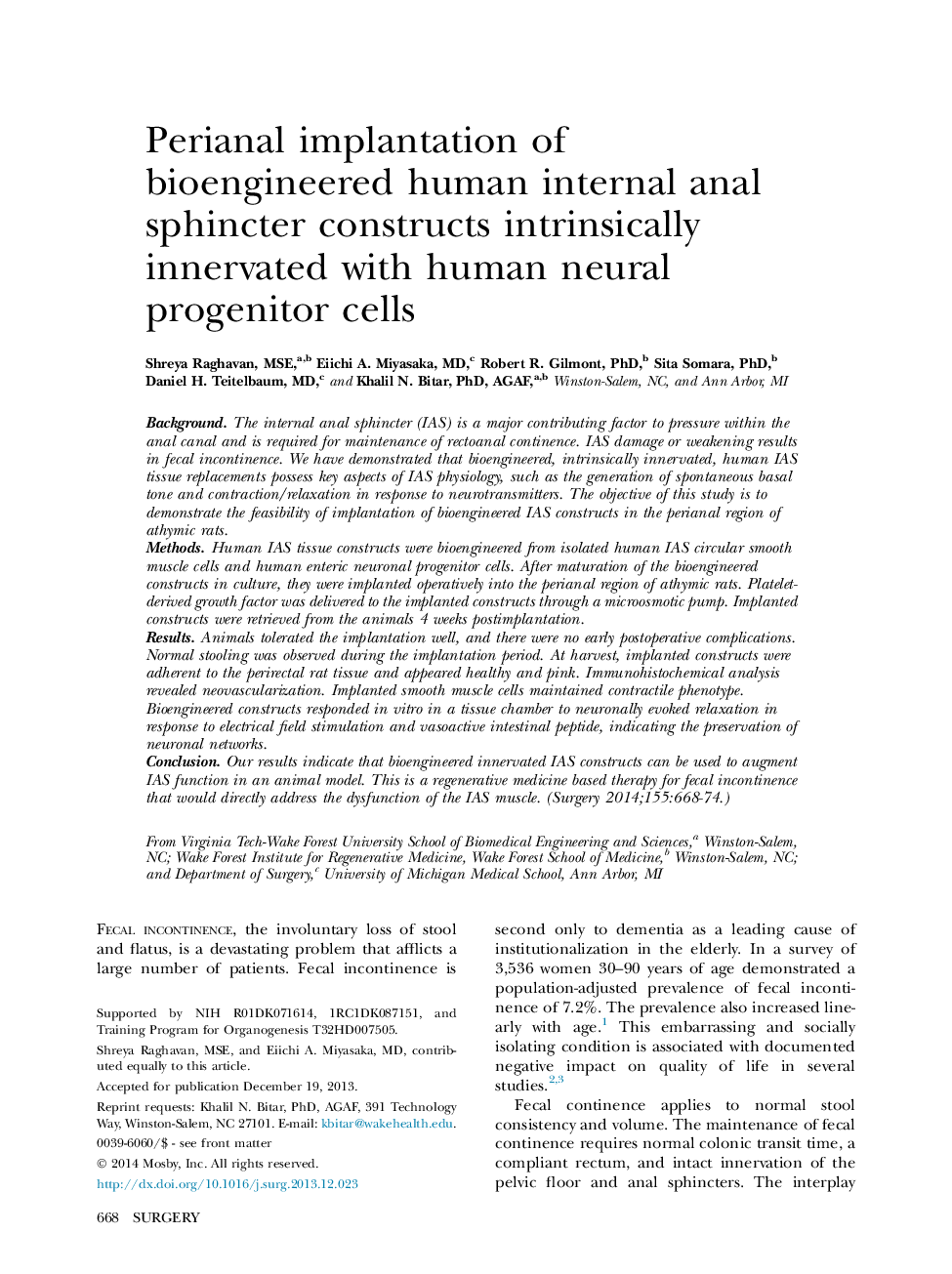| کد مقاله | کد نشریه | سال انتشار | مقاله انگلیسی | نسخه تمام متن |
|---|---|---|---|---|
| 4307283 | 1289243 | 2014 | 7 صفحه PDF | دانلود رایگان |
BackgroundThe internal anal sphincter (IAS) is a major contributing factor to pressure within the anal canal and is required for maintenance of rectoanal continence. IAS damage or weakening results in fecal incontinence. We have demonstrated that bioengineered, intrinsically innervated, human IAS tissue replacements possess key aspects of IAS physiology, such as the generation of spontaneous basal tone and contraction/relaxation in response to neurotransmitters. The objective of this study is to demonstrate the feasibility of implantation of bioengineered IAS constructs in the perianal region of athymic rats.MethodsHuman IAS tissue constructs were bioengineered from isolated human IAS circular smooth muscle cells and human enteric neuronal progenitor cells. After maturation of the bioengineered constructs in culture, they were implanted operatively into the perianal region of athymic rats. Platelet-derived growth factor was delivered to the implanted constructs through a microosmotic pump. Implanted constructs were retrieved from the animals 4 weeks postimplantation.ResultsAnimals tolerated the implantation well, and there were no early postoperative complications. Normal stooling was observed during the implantation period. At harvest, implanted constructs were adherent to the perirectal rat tissue and appeared healthy and pink. Immunohistochemical analysis revealed neovascularization. Implanted smooth muscle cells maintained contractile phenotype. Bioengineered constructs responded in vitro in a tissue chamber to neuronally evoked relaxation in response to electrical field stimulation and vasoactive intestinal peptide, indicating the preservation of neuronal networks.ConclusionOur results indicate that bioengineered innervated IAS constructs can be used to augment IAS function in an animal model. This is a regenerative medicine based therapy for fecal incontinence that would directly address the dysfunction of the IAS muscle.
Journal: Surgery - Volume 155, Issue 4, April 2014, Pages 668–674
